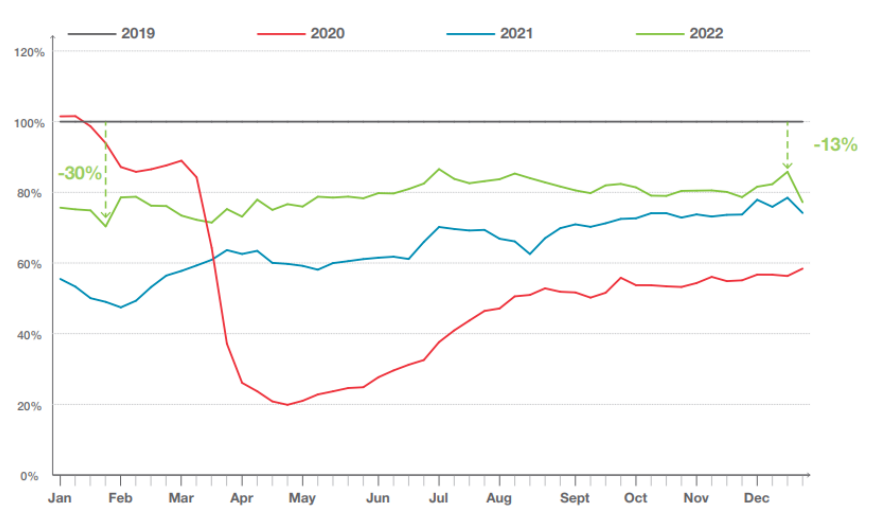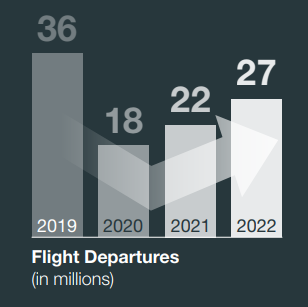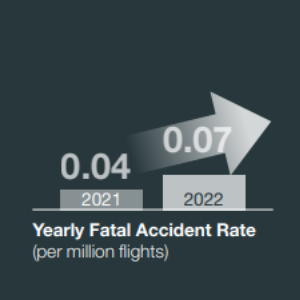The number of flights on commercial jets in 2022 increased by almost 5 million when compared with 2021, but this is still around 20% below the number of flights recorded prior to the pandemic.
The industry is coming back with a positive traffic trend throughout 2022 but the number of flights was still lower than pre-pandemic levels. There was a fatal accident in which all passengers and crews lost their lives that is yet to be classified. This is why, at the time of publication of this brochure, that accident is not yet included in the record.
There were 2 fatal accidents recorded involving collisions with ground vehicles entering the runway. One of them was a hull loss and there were 6 additional hull losses. There were no passenger or crew fatalities in the 2 recorded fatal accidents caused by vehicles entering the runway, however 4 people lost their lives on the ground. These accidents highlight the need to focus on safety across the entire air transport system and to always have a safe aircraft, safely operated, in a safe environment.
In years with low numbers of fatal accidents, it reinforces the need to continuously learn from accidents that could have been fatal, and make efforts to anticipate risks from reported in-service experience or the analysis of operational data.
It is important to consider that the statistics in one year are not always indicative of the overall safety trends. Analysis of aviation accident statistics over recent decades is more representative for evaluating the effectiveness of the safety initiatives that were implemented to mitigate threats, both before and during the recent Covid-19 crisis.







Outlook for 2023 and Beyond
The aviation sector shows a positive trend towards pre-pandemic levels, and this ramp-up also brings the challenge of managing the shortage of aviation professionals. The resilience of the industry relies on the trust of millions of passengers and crew who all expect zero accidents when they fly. This is why safety must always be the priority.
The increase in air travel and cargo demands shows a continuing trend towards a recovery in the number of flights to pre-pandemic levels. This welcome ramp-up also brings with it the challenge of managing a shortage of aviation personnel across the industry. This is a vulnerability that must be recovered in order to have a solid foundation of trained aviation professionals who will ensure safe operations as the industry moves forward in 2023 and beyond. The resilience of the industry to recover from a crisis is a factor in attracting newcomers and talent to work in a sustainable aviation sector.
This recovery relies on the trust of the millions of people who fly on a plane and all expect to reach their destination safely. Even if the accident rate remains very low across the years affected by the Covid-19 crisis, every effort must be made to avoid the trap of complacency and to always keep safety first. All actors across the air transport system must, therefore, share the same ambition: continuous enhancement of aviation safety in the quest to reach zero accidents.

文章来源 | 空客2022年安全报告
